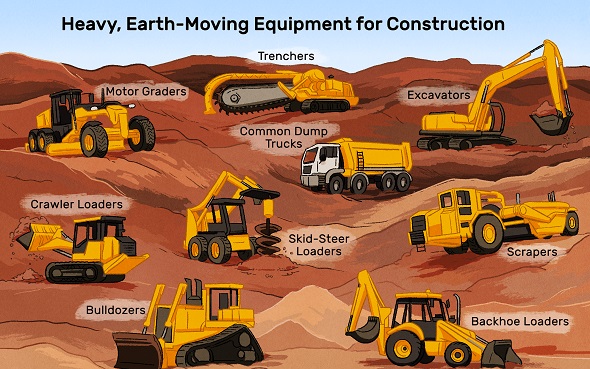Earthmoving equipment is just like any other plant and machinery in Australia. They are designed and governed to the Australian Design Standards.
What are Australian standards?
Standards are voluntary documents that set out specifications, procedures, and guidelines that aim to ensure products, services, and systems are safe, consistent, and reliable.
They cover a variety of subjects, including consumer products and services, the environment, construction, energy and water utilities, and more.
To ensure they keep pace with new technologies, standards are regularly reviewed by Standards Australia technical committees.
There are three categories of standards:
- International Standards
- Regional Standards
- National Standards
How do Australian standards affect Earth Moving Equipment?
With workplace health and safety standards laws and penalties, there is no excuse for any business employee or owner to not beware of their obligations.
Earth-moving equipment is machinery that often works in the hardest of environments and is tasked to do the hardest of jobs.
Whilst many Australian Standards are not law, it is best practice for any company to abide by what is in the standard. With earthmoving equipment, there are a few different standards you need to be aware of.
- AS2294
- AS2951
- AS2958
What about Earth moving equipment brakes?
AS2958.1 is the standard that governs Earthmoving machinery safety, particularly wheeled machine brakes.
The standard covers specific requirements for brake systems for any self-propelled rubber-tires vehicle such as a backhoe loader, dumper, excavator, grader, loader tractor, or tractor-scraper.
This standard object is to assist equipment designers, manufacturers, dealers, employers, and users of earth-moving machinery, so it minimizes the risk to the health and safety of anyone working with or near earth-moving machinery.
The standard AS2958.1 will give you clear definitions of what brake systems are. As well as how machine mass is calculated. What a Retarder will do, and what the expected stopping distance will be.
It also will cover general design requirements in Australia.
If you buy any earth moving equipment in Australia, you can expect as a bare minimum that its braking will comply with the general design requirements.
It’s expected that machines will be equipped with a compliant service brake system. As well as a compliant secondary brake system and a compliant parking brake system.
If you have a failure of a single component, the brake system shall provide a machine-stopping capability that will meet the secondary brake system requirements.
Is your stopping performance correct?
Earthmoving equipment can be involved in some of the worst accidents on work sites. It is so important to make sure your equipment is well maintained, especially the stopping performance.
What are the testing conditions and procedures for brakes?
The great thing about Australian standards. Is that it gives you a very well-defined “what to do” to make sure you comply.
AS2958.1 covers things like test courses, machine, and operation expectations.
It also gives the scope procedure for evaluating and monitoring the performance of braking systems.
Things like parking brakes shall be capable of holding the vehicle stationary in a fully loaded condition. While on the steepest grade that it will encounter in both the forward and the reverse directions. Subject to a maximum incline of 15%
If you take the time and follow the relevant Australian standard you will not go wrong with Earthmoving equipment.



Leave a Reply